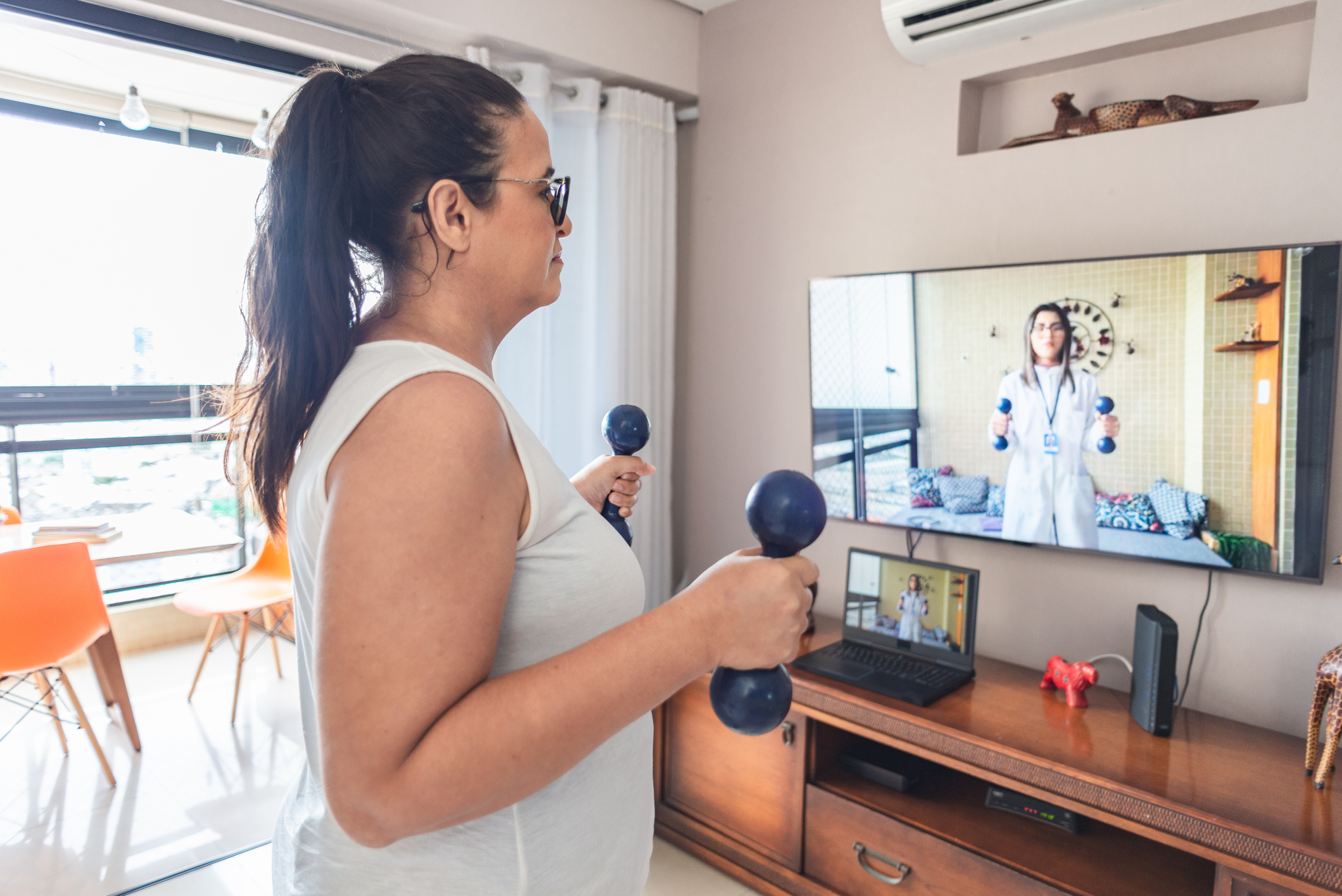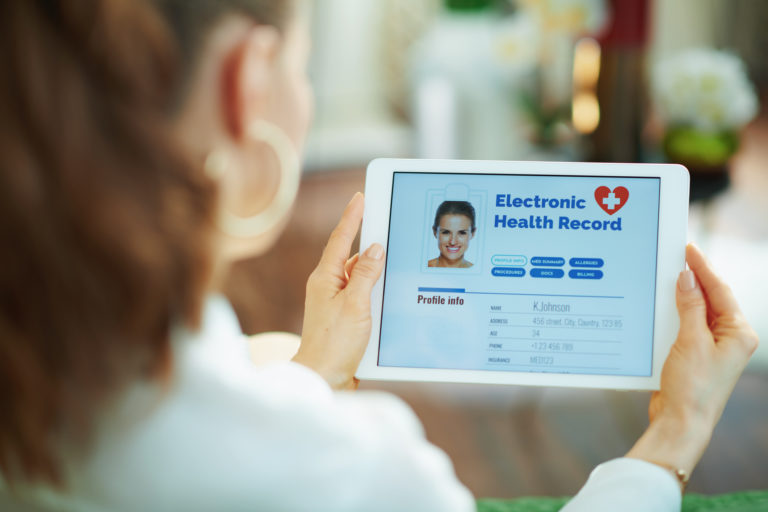Telehealth is here to stay: how to prepare your practice
For both your practice and your patients, telehealth-delivered services are…well…somewhat of a different “beast” than a traditional in-person office visit. You may have already discovered that, if you’ve altered your service-delivery model due to the pandemic. Whether you moved to a completely remote model or a hybrid of office and telehealth, you’ve gotten some taste of the differences, and how your patients have reacted to the changes.
For services that don’t require hands-on care, telehealth has become significantly more popular overall. AARP itself has tracked the rise of virtual medicine and its likely future, with a 300% increase in virtual doctors’ visits among Medicare-eligible seniors since the pandemic began. Nearly half of those surveyed said they were comfortable using telemedicine in the future.
But what about the other half-plus? How can you make them more comfortable for the virtual services you may wish to expand?
It shouldn’t be a huge task, since there are many facts you can leverage. First, virtual visits are safer, more convenient and can be less stressful as traffic returns to higher volumes in larger metro areas. Patients also can be reminded of newer modalities like “internet of medical things” (IoMT) devices such as wearable heart rate monitors and sudden-fall detectors that they may already be using or considering.
Telehealth has certainly opened up new opportunities for practices. Not only can you recruit from greater distances (depending on the licensure of potential new team members), but you also can provide much-needed health services to a broader population base as well, especially in underserved rural or some urban areas.
So even though COVID-19 is more or less under control, are you considering providing more (or all) patient services via telehealth? If so, what can you to make patients and staff alike better prepared for this evolving medical landscape?
Empower your telehealth patients
Whether they’ll articulate it or not, for many your patients — some with decades of experiences with traditional office visits — telehealth at first may be daunting. Hopefully, even older patients have become more comfortable with using technology to video chat with their family and friends. But you need to acknowledge the simple fact that for them, having a remote medical consultation is still likely a new and possibly uncomfortable experience initially unless you help prepare them.
Educate them and put them at ease — You should ease any pre-appointment anxieties by letting them know ahead of time what to expect. That’s where practiceQ™ and its customizable communications features come into play. Using the Appointment Reminders feature, walk first-timers through the process and give them advice about how to maximize the value they receive from their visit (including saving the time and hassles of driving to and from an office appointment, for instance).
Take notes to be prepared — Recommend patients write things down ahead of time that they can refer to while having the actual telehealth visit, including:
- How they’ve been feeling. What symptoms or bodily changes have they noticed that they want to share and discuss?
- Any changes to their medications from other physicians ((adding or discontinuing), and any over-the-counter meds and supplements different than what they were taking as of their last visit.
- Refill requests they haven’t already used the secure patient portal to request.
- Whatever other concerns they want to ensure they don’t forget to address.
Other helpful reminders include:
- Depending on the patient’s condition (including sometimes age), suggest they might want to have their parent, child or other healthcare advocate or surrogate plan to attend the session, if desired.
- Remind them to check their audio/video equipment, including the camera and sound level, an hour or even the day before.
- Suggest that if they tend to be cold, place a sweater next to where they’re going to sit for the telehealth appointment, and remind them to bring some water in case they get parched as they talk.
- Finally, recommend that they keep their notes, along with blank paper and pens, next to them when it’s time for their appointment so they’re prepared to write down any information that comes out of the visit — such as next appointment, ePrescriptions to be picked up or recommended dietary changes.
Along with the standard appointment day/time or mask reminders, these message reminders specific to a telehealth visit are easy to “set and forget” in practiceQ for patients new to this care-delivery model, and can continue to be customized as your telehealth services evolve.
Fundamental, but…This all seems pretty basic, and it is. But until a patient feels truly comfortable in receiving medical services via telehealth, they need guidance about how to change their mindset established by years of office visits. They’re sitting in their living room or another space associated with daily living, not with a medical appointment. The good news is that they’re spared the travel to your office; the bad news is that many patients take that time to compose their thoughts as they drive to their appointment…though they should do the suggestions above for an office appointment as well.
What can your patients expect from you?
environment…particularly a hybrid model that blends in-office and telehealth, depending on the patient, provider schedule and other factors?
A quiet, non-distracting experience — Yes, medical offices can be a bit noisy at times with people coming and going, and wall space “busy” with diplomas, mirrors, posters and such. That can be more distracting on a small smart phone or laptop screen when the patient’s focus should be on you and what you’re saying.
If you can find an area that looks like a medical exam room but not cluttered, perfect; you want it to appear as a familiar environment but not a cluttered one that can distract the patient. Keep the outside door of the space marked as occupied as you would for an in-progress clinic visit, so your consultation won’t be disturbed.
Put them at ease — To recap, you’ve empowered your patient ahead of the telehealth visit with valuable reminders, and given some thought to what non-distracting image you’ll be projecting from where you’ll be sitting for the session.
Now that it’s time to begin, start off as you normally would in the clinic. Welcome them, ask if they’re comfortable, and if they need just a quick moment to grab some water. Those few moments of caring, interpersonal conversation is one of the last steps to establishing a patient’s comfort level for a telehealth visit and in achieving the best-possible outcomes.
Finally, at the end of the visit, recap what action items you’ve discussed together, and thank them again for being a valued patient!
If you get your patients comfortable with virtual visits, you may choose to expand your telehealth use, which can differentiate your practice from the competition because of the ease of interacting with you. This could have other positive side effects to your practice, such as freeing up some office space for other uses (or downsizing the cost of your office space)…and perhaps adding a few more appointment slots in your day!



